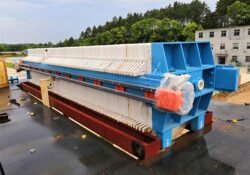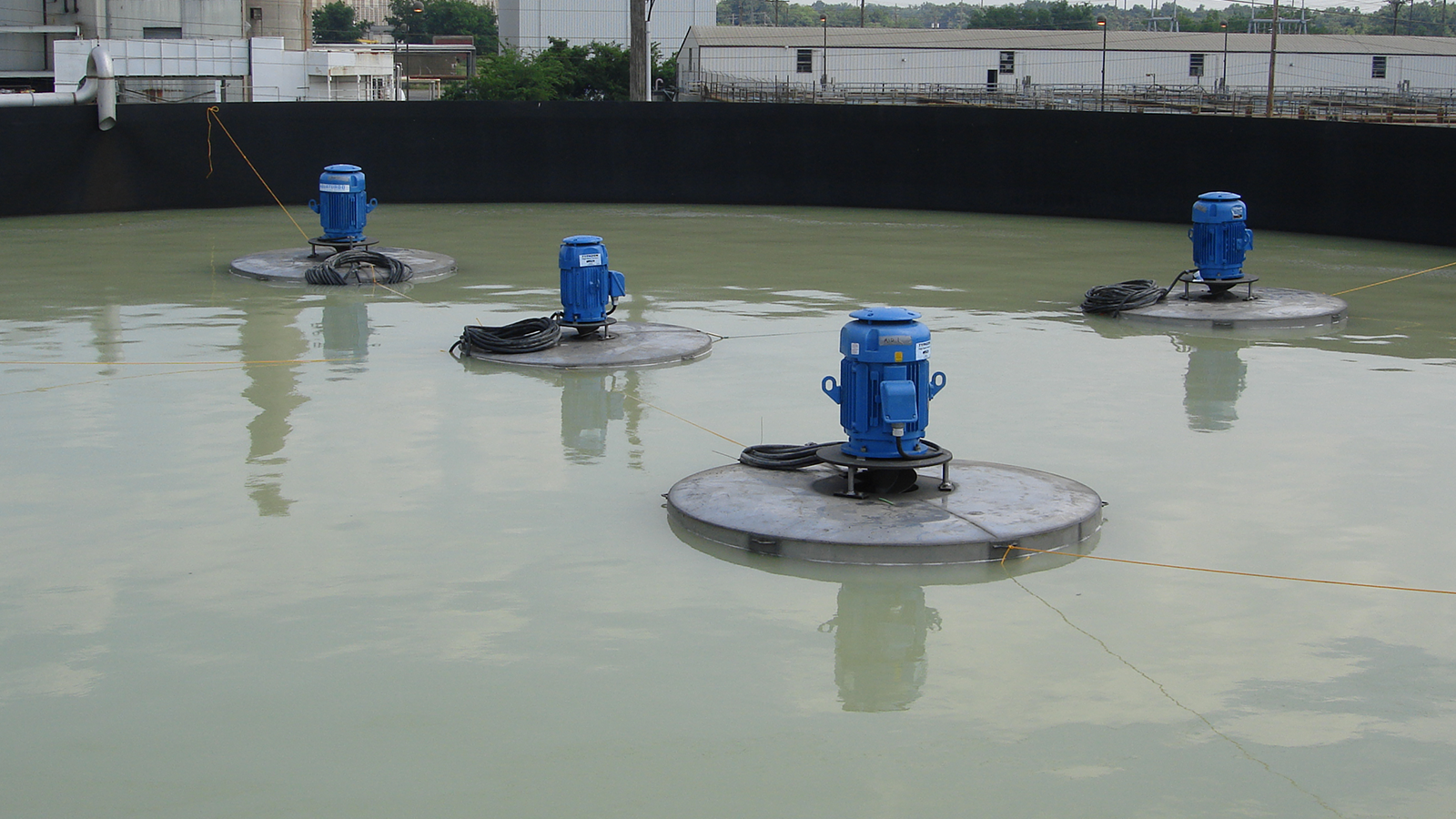Microfiltration: Enhancing Water Purity and Safety

Microfiltration is a reliable method used to separate particles from liquids, typically by employing membranes with pore sizes ranging from 0.1 to 10 microns. It is widely applied in various industries, including water treatment, food and beverage processing, and pharmaceuticals. This process is highly effective in removing bacteria, suspended solids, and other contaminants from water and wastewater.
The technology behind microfiltration includes different types of membranes and filter mechanisms. These systems can be made from materials like ceramics, polymers, and metallic fibers. The choice of membrane material and pore size depends on the specific application requirements and the type of contaminants to be removed. Industrial applications often utilize ceramic microfiltration membranes due to their durability and high resistance.
In addition to its widespread use in industry, microfiltration units are now common in household water treatment systems. They provide an added layer of protection against pathogens and are an essential component of modern water purification strategies. For instance, household filtration units may use ultrafiltration membranes for better performance against smaller particles.
Key Takeaways
- Microfiltration is effective in removing bacteria and suspended solids from water.
- Different membrane materials are used based on the type of contaminants.
- Household water systems often include microfiltration units for added safety.
Fundamentals of Microfiltration
Microfiltration is a common method used to remove particles and microorganisms from water. It is often compared with ultrafiltration due to their different uses and capabilities.
Microfiltration Membrane Types
Microfiltration membranes have large pore sizes, usually between 0.1 to 10 micrometers. This makes them effective at removing large particles, bacteria, and suspended solids. They work using a pressure-driven process where water passes through the membrane, leaving impurities behind.
There are different types of microfiltration membranes, including:
- Polymeric Membranes: Made from materials like polyvinylidene fluoride (PVDF) and polypropylene (PP). These are durable and relatively inexpensive.
- Ceramic Membranes: Made from materials like alumina or zirconia. These are highly resistant to chemicals and high temperatures.
Each type has specific advantages and is chosen based on the particular requirements of the water treatment process.
Microfiltration vs Ultrafiltration
Microfiltration and ultrafiltration are both used for water purification, but they differ in terms of pore size and the contaminants they remove.
- Microfiltration: Targeted at removing large particles and microorganisms like bacteria from water using membranes with pore sizes between 0.1 to 10 micrometers. It does not remove dissolved particles or small contaminants like viruses.
- Ultrafiltration: Uses smaller pore sizes, between 0.01 to 0.1 micrometers, to remove not only bacteria but also viruses and fine colloidal particles. Because of the smaller pore size, ultrafiltration is used when higher purity levels are needed.
Microfiltration is typically employed in pretreatment stages, while ultrafiltration is used for more refined filtration steps. Both methods can be part of a larger water treatment system to ensure comprehensive purification.
More information can be found on the Fundamentals of Membranes and Membrane Distillation aspects of these technologies.
Microfiltration Process and Mechanisms
Microfiltration is a type of membrane filtration that removes particulates larger than 0.1 micrometers.
How does cross-flow microfiltration work?
In cross-flow microfiltration, the feed water flows parallel to the membrane surface. This creates shear forces that help reduce fouling. The process allows smaller particles and water to pass through while keeping larger particles on the membrane surface.
Key Components and Steps
- Membrane Material: Typically made of polymers or ceramics that are porous.
- Pores Size: Ranges from 0.1 to 10 micrometers.
- Flow Direction: Feed flows parallel to the membrane.
What does microfiltration remove?
- Suspended Solids: Dirt, clay, and slit.
- Microorganisms: Bacteria and some viruses.
- Turbidity: Reduces cloudiness in water.
Advantages
- Efficient: Removes particles and microorganisms effectively.
- Minimal Chemical Use: Often requires fewer chemicals compared to other methods.
For more detailed information on membranes used in microfiltration, visit Membrane Bioreactor (MBR) Technology. If you’re interested in fouling mechanisms, check out Roles of Membrane-Foulant.
Microfiltration Equipment and Technology
Microfiltration involves the use of specialized technology to remove small particles from liquids, achieving efficient separation and purification. This section will cover the essential equipment and one key technique used in microfiltration.
Cross Flow Microfiltration
Cross-flow microfiltration is a common technique used in microfiltration systems. It involves the liquid flowing tangentially across the surface of a filter membrane. This helps to reduce the clogging of the filter since the flow of liquid continuously sweeps away impurities from the membrane surface.
The primary equipment includes microfiltration membranes typically made from materials like polymeric or ceramic substances. These membranes have pore sizes ranging from 0.1 to 10 micrometers. The systems utilize pumps to maintain the appropriate pressure and flow rate, ensuring effective filtration.
Using cross-flow microfiltration, industries such as food and beverage, biotechnology, and wastewater treatment can achieve high levels of purification. This method is also effective in separating bacteria and other microorganisms from liquids, enhancing product safety and quality. The key advantage is its ability to continuously produce clean filtrate without frequent stoppages for cleaning.
Water Treatment through Microfiltration
Microfiltration is a technology used in water treatment to remove small particles and pathogens. This section explores its application in water treatment and the specifics of ceramic membrane microfiltration.
Application in Water Treatment
Microfiltration is used to filter out suspended solids, bacteria, and protozoa from water. It is particularly effective for treating surface water and groundwater. One of the main benefits is its ability to work at low pressures, making it energy-efficient.
Microfiltration can be used as a pre-treatment step before other filtration processes, like reverse osmosis. By doing this, it helps extend the life of other filters and improves their effectiveness.
In water treatment plants, microfiltration is often automated, reducing the need for manual supervision. This makes it a reliable and constant method for water purification.
Ceramic Membrane Microfiltration
Ceramic membrane microfiltration uses ceramic materials to filter water. These membranes are highly durable and resistant to chemical and thermal stresses, making them ideal for harsh environments.
Ceramic membranes are more costly upfront compared to polymeric membranes, but their long lifespan and robust performance can justify the investment. They are particularly useful in treating water with high levels of contaminants.
One key advantage is their ability to be cleaned and reused, which makes them a sustainable choice. This reduces the waste and expenses associated with membrane replacement. In industrial applications, ceramic membrane microfiltration ensures consistent water quality and meets stringent regulatory standards.
Industrial Applications of Microfiltration
Microfiltration is widely used in various industrial applications. In the biopharmaceutical industry, microfiltration is essential for removing bacteria and yeast during the production of drugs and vaccines. This ensures the final product is pure and safe for use.
Another important application is in food and beverage processing. Microfiltration helps in clarifying juices, milk, and wine by removing sediments and microorganisms. This enhances the product’s quality and extends its shelf life.
In the wastewater treatment industry, microfiltration is utilized to remove suspended solids and pathogens. This improves water quality and makes it safer for environmental discharge or reuse. According to a review, membrane technologies, including microfiltration, play a crucial role in modern wastewater treatment.
The chemical industry also benefits from microfiltration. It is used to separate catalysts and other fine particles from the final product. This ensures the chemical processes are efficient and the products meet quality standards.
Microfiltration finds application in the electronics industry, particularly in the manufacturing of semiconductors. It helps in purifying water and chemicals used in the production process, ensuring the high quality and reliability of electronic components.
Here’s an overview of some key industries using microfiltration:
| Industry | Application |
|---|---|
| Biopharmaceutical | Drug and vaccine purification |
| Food and Beverage | Clarifying juices, milk, and wine |
| Wastewater Treatment | Removing suspended solids and pathogens |
| Chemical | Separating catalysts and fine particles |
| Electronics | Purifying water and chemicals |
In summary, microfiltration plays a vital role in enhancing both the quality and safety of products across various industries. This technology continues to evolve, offering more efficient and reliable filtration solutions.
Benefits and Limitations of Microfiltration
Microfiltration offers several advantages such as the removal of bacteria and large particles. However, it also has limitations, including its ineffectiveness in filtering out chemicals and certain viruses.
Advantages Overview
Microfiltration is highly effective in removing suspended solids and larger pathogens like bacteria from water. This makes it a suitable choice for drinking water treatment and certain industrial applications.
It is used in wastewater treatment to separate sludge from treated water. In the food and beverage industry, it helps in clarifying liquids like wines and beers. Microfiltration membranes typically have a pore size of 0.1 to 10 microns, effectively catching particles while allowing water to pass through.
The process is relatively simple and doesn’t require intensive maintenance. It can serve as a pre-treatment step for more sophisticated filtration methods like ultrafiltration or reverse osmosis. In terms of operation, microfiltration systems often have lower energy requirements compared to other filtration technologies.
Potential Drawbacks
Microfiltration has certain limitations, especially in terms of its filtering capabilities. It does not remove dissolved contaminants like chemicals and small viruses. Thus, it is often used in combination with other filtration technologies for comprehensive water treatment.
Over time, microfiltration membranes can get clogged with the particles they are filtering out. This leads to the need for regular cleaning or membrane replacement, which can add to operational costs. In industrial applications, frequent maintenance might interrupt operations and increase downtime.
Additionally, while it is efficient in many scenarios, its effectiveness highly depends on the concentration and size of the contaminants present in the water. Filters designed for microfiltration may need compatible pre-treatment processes to enhance their performance and longevity.
Frequently Asked Questions
Microfiltration is an essential process in water treatment and biotechnology. It mainly focuses on removing contaminants and particulates from liquids.
How does the microfiltration process work?
Microfiltration uses a semi-permeable membrane to separate particles from liquids. The process forces the liquid through the membrane, leaving contaminants behind. Common contaminants filtered out include bacteria, protozoa, and particulates. The technique is widely used in water purification, dairy processing, and the sterilization of beverages.
How does microfiltration differ from conventional filtration methods?
Microfiltration operates at a lower pressure compared to reverse osmosis and ultrafiltration. Unlike conventional methods that use sand or carbon filters, microfiltration uses membranes with very small pores. This allows it to effectively remove particles as small as 0.1 microns while maintaining a high flow rate. Conventional methods often can't achieve this level of precision.
What are the typical pore sizes for microfiltration membranes?
Pore sizes for microfiltration membranes typically range from 0.1 to 10 microns. The selection of pore size depends on the specific application and the type of contaminants that need to be removed. For example, a 0.1-micron membrane might be used to remove bacteria, while larger pores might be sufficient for general particulate removal.



